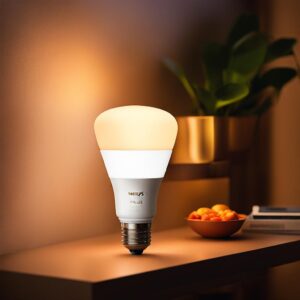-
Table of Contents
- Avent Philips Sterilizer Instructions: A Comprehensive Guide
- How to Use the Avent Philips Sterilizer
- Philips Avent Microwave Sterilizer Instructions
- Philips Avent Sterilizer Manual PDF
- Troubleshooting and Replacement Parts
- 1. Sterilizer not turning on
- 2. Insufficient sterilization
- Replacement Parts for Avent Philips Sterilizer
- Calling the Authorized Service
- Conclusion
Avent Philips Sterilizer Instructions: A Comprehensive Guide

Keeping your baby’s feeding equipment clean and sterilized is crucial for their health and well-being. Avent Philips sterilizers are a popular choice among parents for their ease of use and effectiveness. In this article, we will provide you with detailed instructions on how to use the Avent Philips sterilizer, including troubleshooting tips and information on replacement parts.
How to Use the Avent Philips Sterilizer
Using the Avent Philips sterilizer is a simple and straightforward process. Follow these step-by-step instructions to ensure proper sterilization of your baby’s bottles and accessories:
- Start by washing the bottles, nipples, and other accessories with warm soapy water. Rinse them thoroughly to remove any soap residue.
- Place the cleaned items in the sterilizer, making sure not to overcrowd it. It’s important to leave enough space between the items for the steam to circulate.
- Add water to the sterilizer according to the manufacturer’s instructions. Be careful not to exceed the maximum water level indicated.
- Close the sterilizer securely with the lid.
- Plug in the sterilizer and turn it on.
- Set the sterilization cycle according to your needs. Most Avent Philips sterilizers offer different cycle lengths, typically ranging from 6 to 15 minutes.
- Wait for the sterilization cycle to complete. The sterilizer will automatically shut off once the cycle is finished.
- Allow the sterilizer to cool down before opening the lid. This will prevent any potential burns from the hot steam.
- Remove the sterilized items from the sterilizer using clean tongs or washed hands.
Following these instructions will ensure that your baby’s bottles and accessories are properly sterilized, eliminating harmful bacteria and keeping your little one safe.
Philips Avent Microwave Sterilizer Instructions
If you prefer a microwave sterilizer, Philips Avent also offers a convenient option. Here’s how to use the Philips Avent microwave sterilizer:
- Wash the bottles, nipples, and accessories with warm soapy water and rinse them thoroughly.
- Place the cleaned items in the microwave sterilizer, making sure not to overcrowd it.
- Add water to the sterilizer according to the manufacturer’s instructions.
- Close the sterilizer securely with the lid.
- Place the sterilizer in the microwave and set the appropriate power level and time according to the manufacturer’s instructions.
- Start the microwave and wait for the sterilization cycle to complete.
- Use caution when removing the sterilizer from the microwave, as it will be hot.
- Allow the sterilizer to cool down before opening the lid.
- Remove the sterilized items from the sterilizer using clean tongs or washed hands.
The Philips Avent microwave sterilizer offers a quick and efficient way to sterilize your baby’s bottles and accessories, saving you time and effort.
Philips Avent Sterilizer Manual PDF
If you prefer a more detailed guide on how to use the Avent Philips sterilizer, you can refer to the official philps avent sterilizer manual. The manual provides comprehensive instructions and additional information on maintenance and troubleshooting. You can find the manual in PDF format on the official Philips website or by contacting their customer support.
Troubleshooting and Replacement Parts
While Avent Philips sterilizers are known for their reliability, occasional issues may arise. here are some comon troubleshooting examples and their solutions:
1. Sterilizer not turning on
If your sterilizer is not turning on, check the power cord and ensure it is securely pluged into a working outlet. ıf the problem persists, contact the authorized service center for assistance.
2. Insufficient sterilization
If you notice that the sterilization is not effective, make sure you are following the instructions correctly, including using the recommended amount of water. ıf the issue continues, descale the sterilizer according to the manufacturer’s instructions. ıf the problem persists, contact the authorized service center for further assistance.
Replacement Parts for Avent Philips Sterilizer
If you need to replace any parts of your Avent Philips sterilizer, such as the lid, tray, or heating element, it is recommended to purchase genuine replacement parts from authorized retailers or the official Philips website. Using genuine parts will ensure the optimal performance and safety of your sterilizer.
Calling the Authorized Service
If you encounter any issues with your Avent Philips sterilizer that cannot be resolved through troubleshooting, it is advisable to contact the authorized service center. In the United States, there are service centers located in various provinces. To find the nearest service center, visit the official Philips website and call the designated call center.
Conclusion
Properly sterilizing your baby’s bottles and accessories is essential for their health and safety. Avent Philips sterilizers offer a convenient and effective solution for busy parents. By following the instructions provided in this article, you can ensure that your Avent Philips sterilizer is used correctly and efficiently. Remember to refer to the official philips avent sterilizer manual for more detailed information and troubleshooting tips. In case of any issues, don’t hesitate to contact the authorized service center for assistance. Happy sterilizing!
Note: The information provided in this article is collected from the internet and may contain incorrect information. For the most accurate and up-to-date instructions, please visit the official website of the company. The site owner does not bear any responsibility for incorrect information or application.







